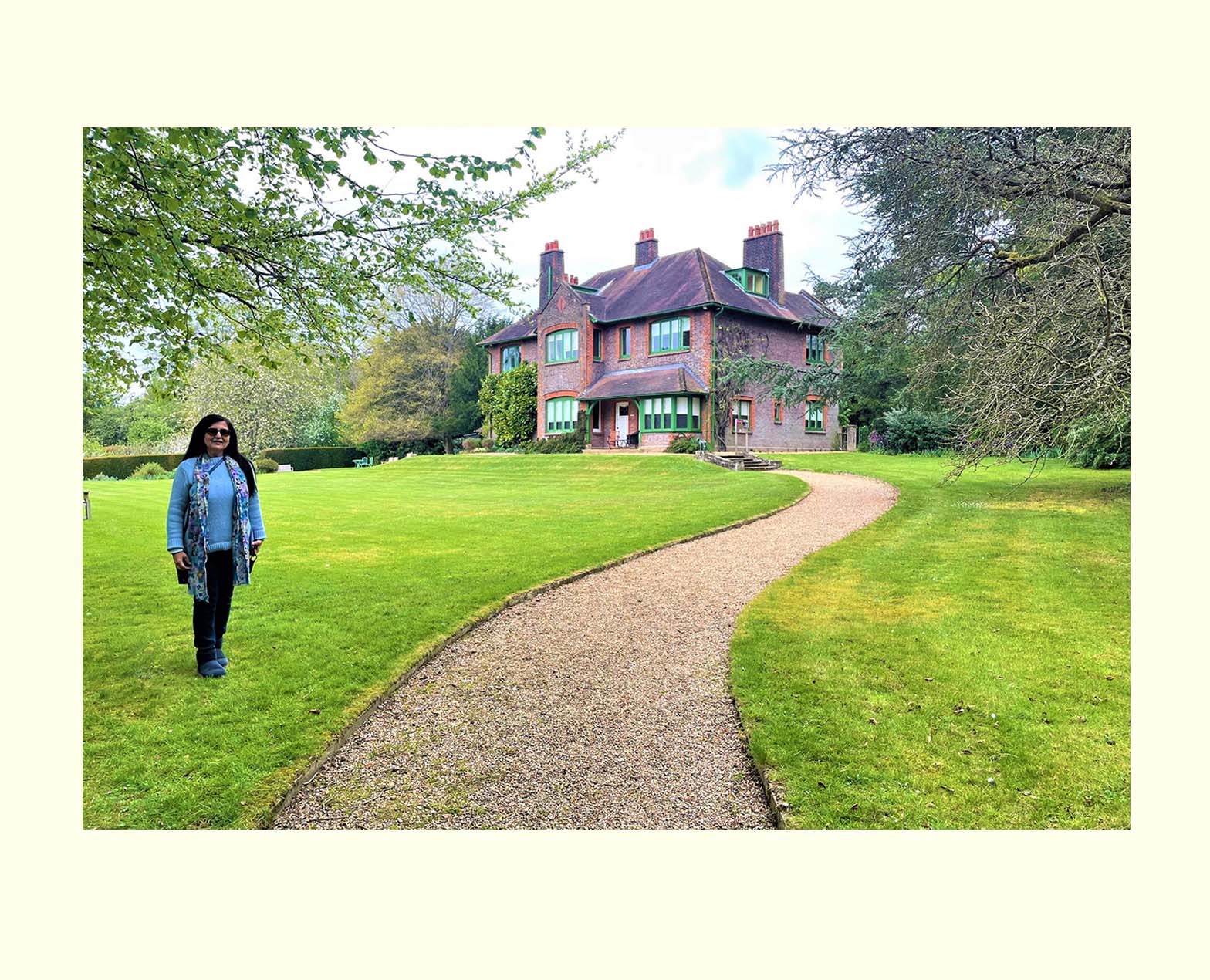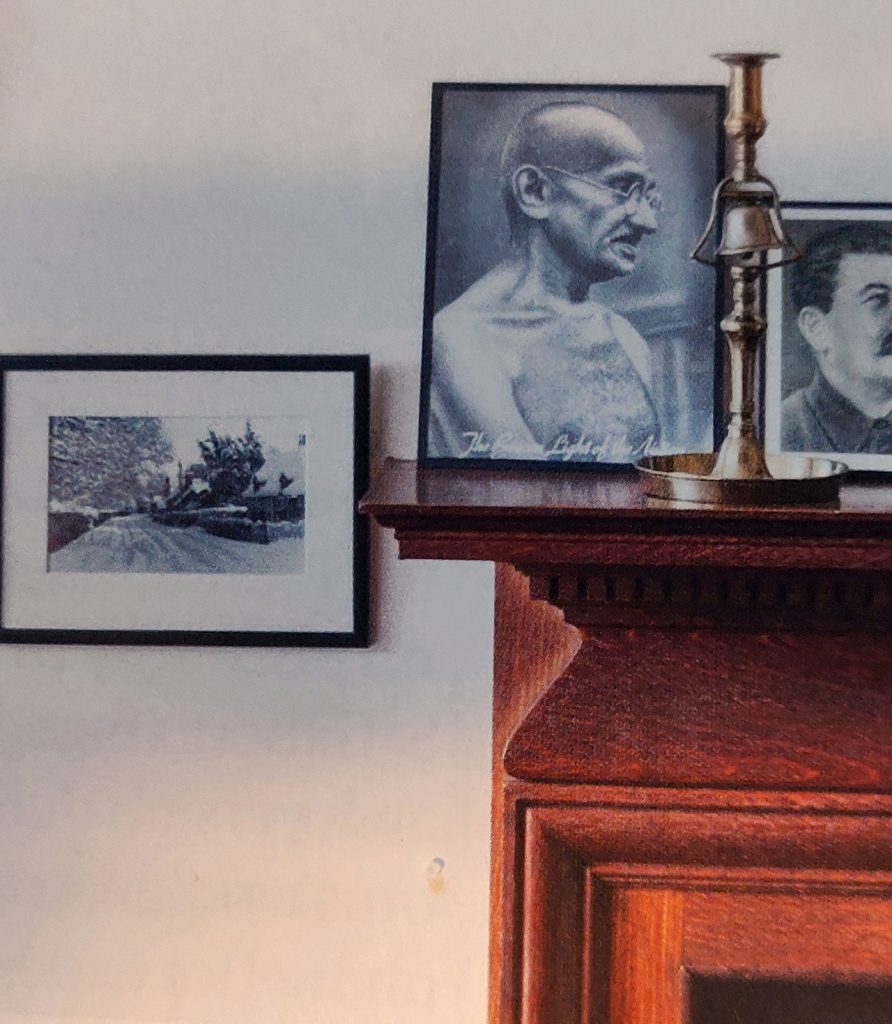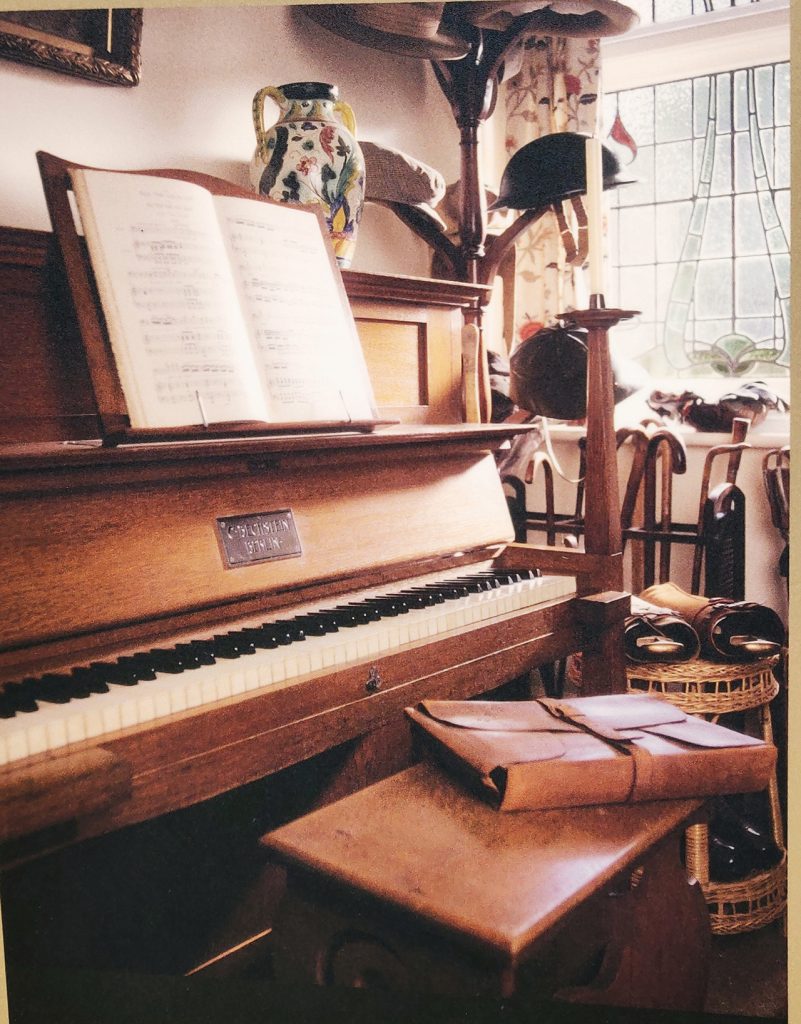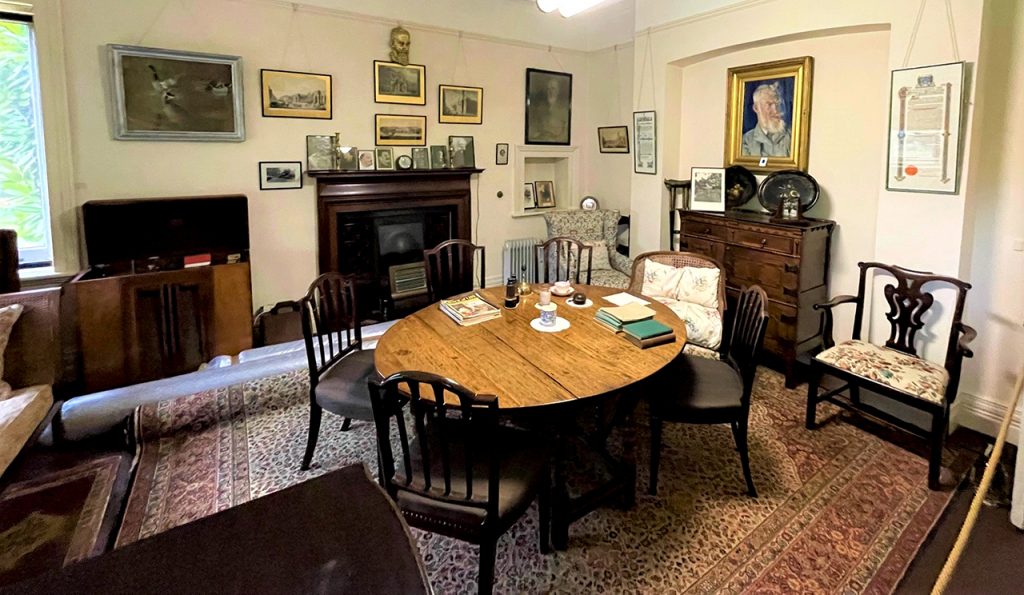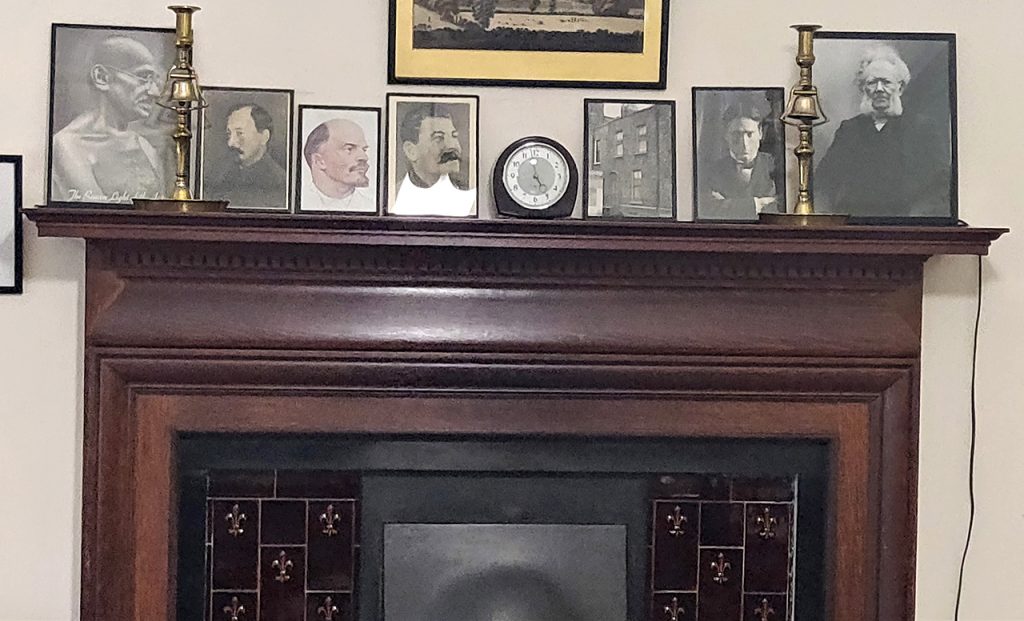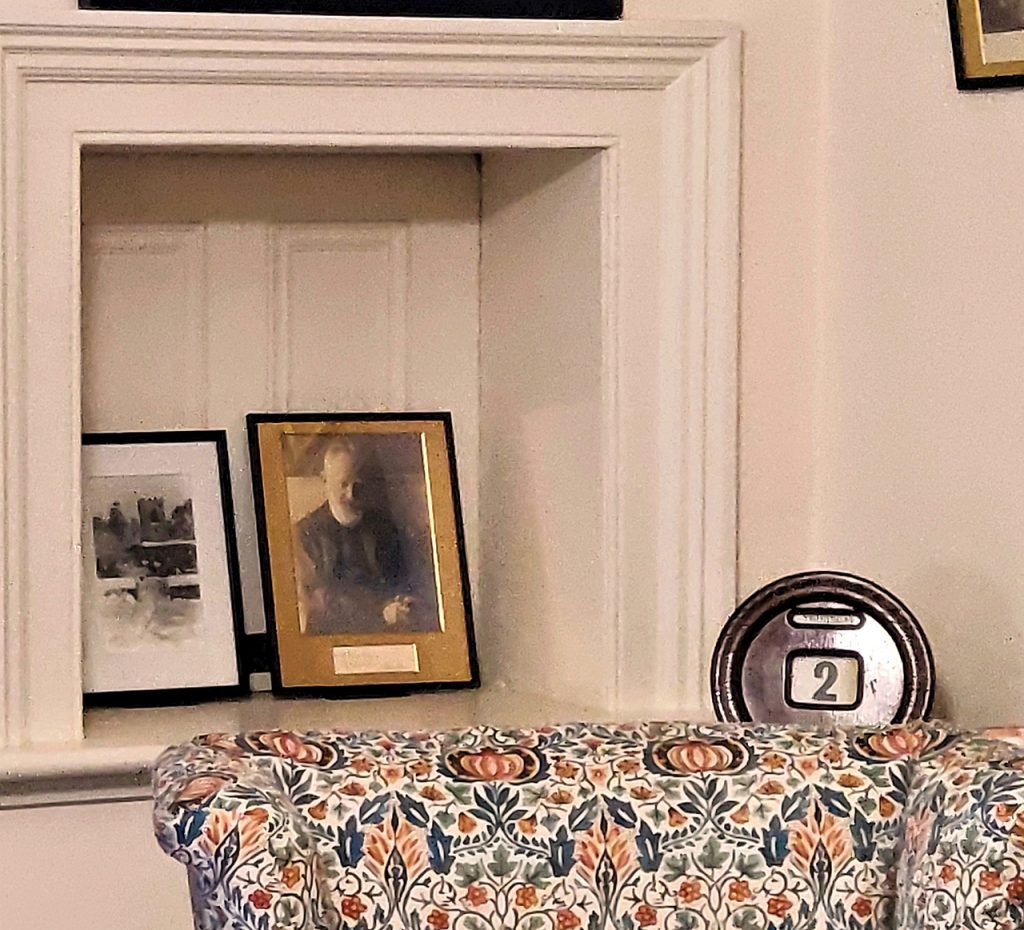George Bernard Shaw at Shaw’s Corner- of Art and Literature – Part 2
We reached the house of the celebrated Anglo- Irish playwright & socialist George Bernard Shaw which continues to attract visitors and film makers till today. We were at Shaw’s Corner in England- the home to Shaw and his wife Charlotte. From the popular play Pygmalion in 1913 that inspired famous movies- Pygmalion 1938, My Fair Lady 1964 and Pretty Woman 1990 to the Literary Nobel Prize in 1925; Shaw’s achievements were multiple. On the other hand, he supported Gandhi’s non-violent movement in pre independent India and even Nehru was his admirer who visited Shaw’s Corner in 1949. Further we were keen to look out for Indian paintings and artefacts embellishing the simple Shaws home.
Entrance Hall and Nehru
After exploring the serene garden, historic Verandah and Shaw’s Writing Hut enveloped in woodland we gathered outside the front door of Shaw’s Corner- once a Rectory (house of the parish priest ) ; to meet our well-dressed guide. Our small group proceeded for the Entrance hall passing an exquisite stained-glass panel. I stepped into the Time-machine to witness the Indian Prime minister Nehru standing in this very place as informed by the Volunteer earlier. In the small Entrance Hall besides the large fire-hearth decorated with an attractive Egyptian Bust connected to Shaw’s play Caesar and Cleopatra, later made into a movie with famous British actress Vivian Leigh! In a corner, George Bernard Shaw’s Hat-stand with an array of Hats and Walking Sticks was on display, used by him for a variety of activities and hobbies for the day!
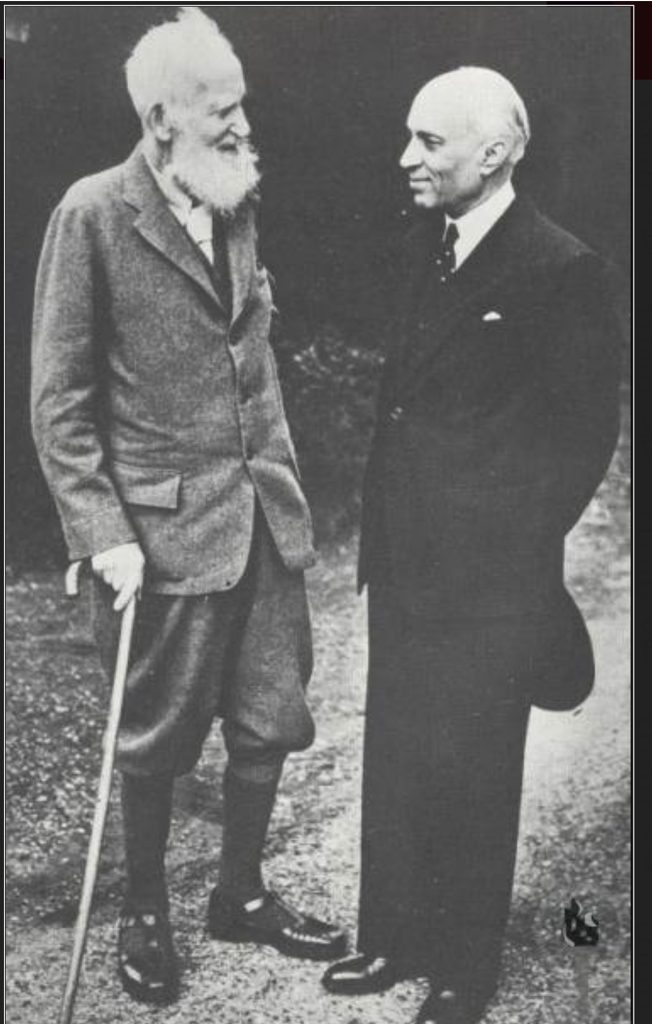
First Prime minister of India Nehru meets Shaw in May 1949.Photo courtesy-Nehru Memorial museum and Library
Shaw’s Piano- love for music
We spotted Shaw’s Bechstein piano whose photo we had seen earlier on the Board outside the house, placed near the Entrance door.
The guide added that he played it every day exclusively for his wife Charlotte during her illness while she lay in the bedroom upstairs! He was a good pianist who played compositions by Master Pianists like Wagner & Beethovanbesides others. We moved to the Drawing room after photographing beautiful water colours-painting of Jama Masjid, I guess.
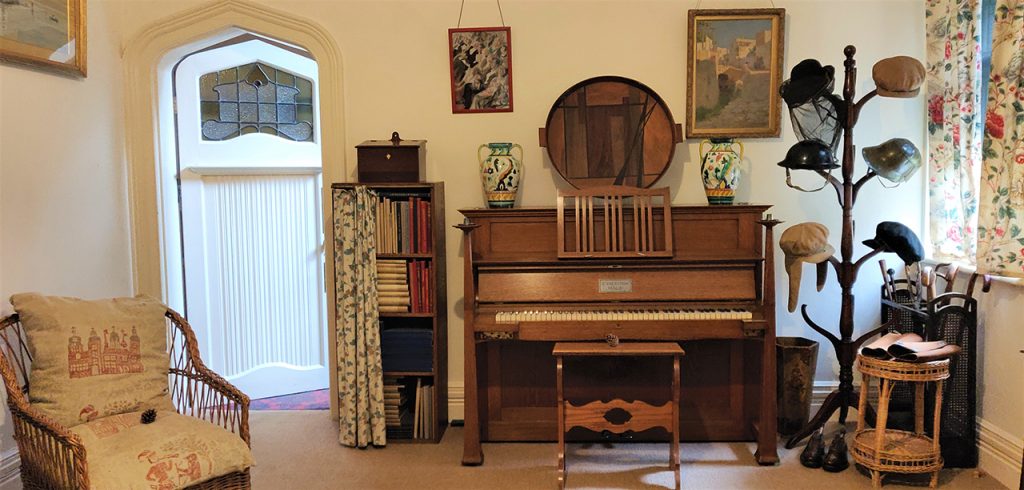
Entrance Hall with Shaw’s Piano. Also seen is the unusual array of Shaw’s hats for different purposes and the white Kitchen door
Drawing room- from Sculptures to Oscar
This was the Bay-window room with Vitaglass that we admired from the historic entertainment area- the Verandah a little while ago whilst in the garden. The room was decorated with excellent Sculptures like the Bust of Shaw by French sculptor Rodin from1906 and another bust by Russian sculptor Troubetzkoy from 1932.
His love for sculptures led him to write the famous Pygmalion play based upon a Greek legend in which a beautiful woman’s sculpture is blessed with life. It was first written in 1912, premiered in Vienna 1913 next in New York 1914 and finally in London. Further Pygmalion was made into a movie in 1938 that won Shaw an Oscar! Years later My Fair Ladystarring Audrey Hepburn & Rex Harrison in1964 and 1990 Hollywood hit Pretty Woman with Julia Roberts and Richard Gere were based upon Pygmalion as well! Till today Shaw’s Pygmalion is the favourite of Theatre-companies and audience-Open Air and regular Theatre, both! We were told that the Oscar was on display in the Museum room upstairs.
Dining room to the Demise room
Next our group moved to the adjoining Dining room- again opening to the Verandah and Garden outside. One could imagine the Shaws entertaining artists and politicians with perfect use of the Drawing room & Dining room with well-lit Bay-windows opening onto a Verandah outside overlooking the large beautiful green sloping garden and sparse woodland. Even the Dining table there had an attractive view of luxuriant greenery outside.
Besides Shaw’s traditional rectangular Radiogram; 7 black & white photographs on the front mantel-shelf were definitely eye catching, Gandhi being the first! Shaw was a great admirer of Gandhi who led non-violent civil disobedience movement for India’s independence.
One corner of the room held a calendar dated 2nd November 1950, the day he passed away in this room. On my left was the Urn that contained Shaw’s ashes scattered in the lower garden and around his Writing Hut where we had gone earlier; after being mixed with those of his wife Catherine; according to his last wish!
George Bernard Shaw, Gandhi & Nehru
When Gandhi visited Britain, most Englishmen were in awe of this simple old man who woke up at 4 am and worked past midnight, joining meetings with leaders, writing letters alongwith formulating articles for journals!! Gandhi was an enigma and playwright & artist George Bernard Shaw’s social activist’s side was aroused when he visited him and held his hand opening with ‘I am also a sort of a Mahatma’ and proceeded to have an hour long discussion on numerous subjects of mutual interest.
Another interesting question by Shaw that I recalled reading previously, was pertaining to the Round Table Conference- ‘Is not this Round Table Conference testing your patience?’ Gandhi replied calmly –‘Infinite patience is required in matters like this!!’ When Shaw was later queried about impressions of Gandhi, he replied “You might well ask for someone’s impression of the Himalayas!!” Few years later when Gandhi’s assassination shook the world; George Bernard Shaw paid homage in an ironic style- ‘It shows how dangerous it is to be good.’
Nehru too held George Bernard Shaw in a ‘distinctive-locus’ since he heard him speak about Socialism at Cambridge in the year 1912 and then continued to follow his writings. The first Indian Prime Minister Nehru visited GBS in this Ayot Saint Lawrence home that we were visiting and the visit has been compared to a pilgrimage! Nehru made an emotional statement when GBS passed away in the year 1950 ‘ he was not only one of the greatest figures of his age, but one who influenced the thought of vast numbers of human beings during two generations.’
Photo Courtesy
Arvind Chopra.
